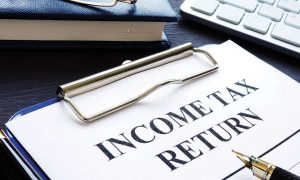New Delhi: As Finance Minister Nirmala Sitharaman prepares to present the last (interim) Budget before the 2024 general elections on Feb 1, millions of taxpayers are on the edge of their seats, hopeful for favorable changes.
Let’s break down some key terms to make sense of the upcoming budget and understand what lay taxpayers can expect.
Read More:- Direct tax-GDP ratio rose to 15-year high in FY23, tax buoyancy dipped
Tax Deduction
The tax deduction is like a discount on your tax bill. For example, a standard deduction of Rs 50,000 lowers your total income, reducing the taxable amount. Investments in PPF, NSC, and tax-saving FDs can also fetch deductions under section 80C, up to Rs 1,50,000.
Rebate
A rebate is a reduction in total income tax, aimed at stimulating economic activity by lessening the tax burden for taxpayers.
Read More:- Interim Budget 2024: Enhance GST Registration Threshold To Rs 40 Lakh From Rs 20 Lakh
Surcharge On Tax
Applicable to those earning more than Rs 50 lakh, the surcharge is an extra tax applied to the existing tax rate. A 10 percent surcharge on a 30 percent tax rate raises the total tax liability to 33 percent.
Cess On Tax
Cess is an additional tax, currently at 4 percent, imposed on income tax to fund specific objectives like health and education. It is charged on the total tax liability, including surcharge.
Read More:- Missing Bengaluru Boy Found in Hyderabad’s Nampally Metro Station; Mother Thanks Everyone For ‘Support’
New Tax Regime
Introduced in 2022, the new tax regime has seven slabs with concessional rates. However, it eliminates many tax deductions. In the financial year 2023-24, it became the default regime.
Old Tax Regime
The previous regime, with four slabs, still exists and retains deductions that the new regime phased out. The highest tax rate is 30 percent for incomes above Rs 10 lakh.
TDS
TDS is a way of collecting tax at the source of income, such as banks deducting tax when transferring interest income or companies deducting tax on dividend income transfers.
Read More:- DGCA slaps Rs 1.1-crore penalty on Air India over safety violations on few long-range routes
Tax Saving Instruments
These saving instruments like PPF, NSC, and NPS allow taxpayers to claim deductions in their income tax. Note that several deductions are not permitted in the new tax regime.
Tax Collection At Source (TCS)
TCS is an extra amount collected as tax by a seller from the buyer at the time of sale, deposited with the tax authority. For example, remittances exceeding Rs 7 lakh in a financial year may attract a TCS of 20 percent.
Also Read– Prevent Your Aadhaar Biometrics Misuse! Here’s How To Lock & Unlock Aadhaar Details
Virtual Digital Assets (VDAs)
VDAs, introduced in 2022, include digital currencies like Bitcoin, Ethereum, and Dogecoin. They come under a tax framework with a 1 percent TDS on sales and purchases and a 30 percent tax on capital gains.



































